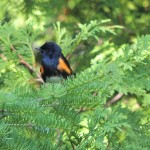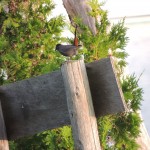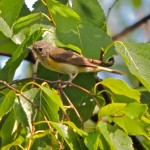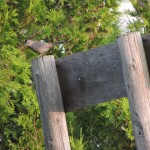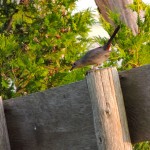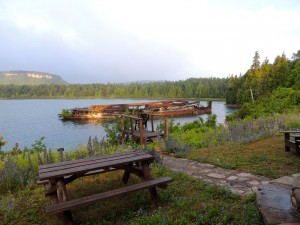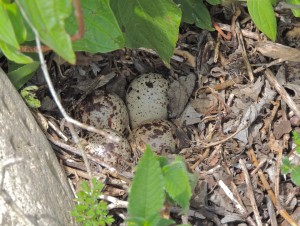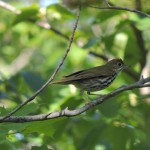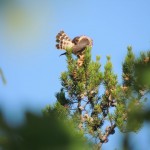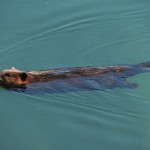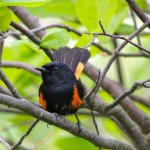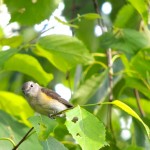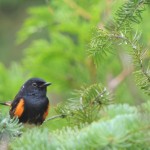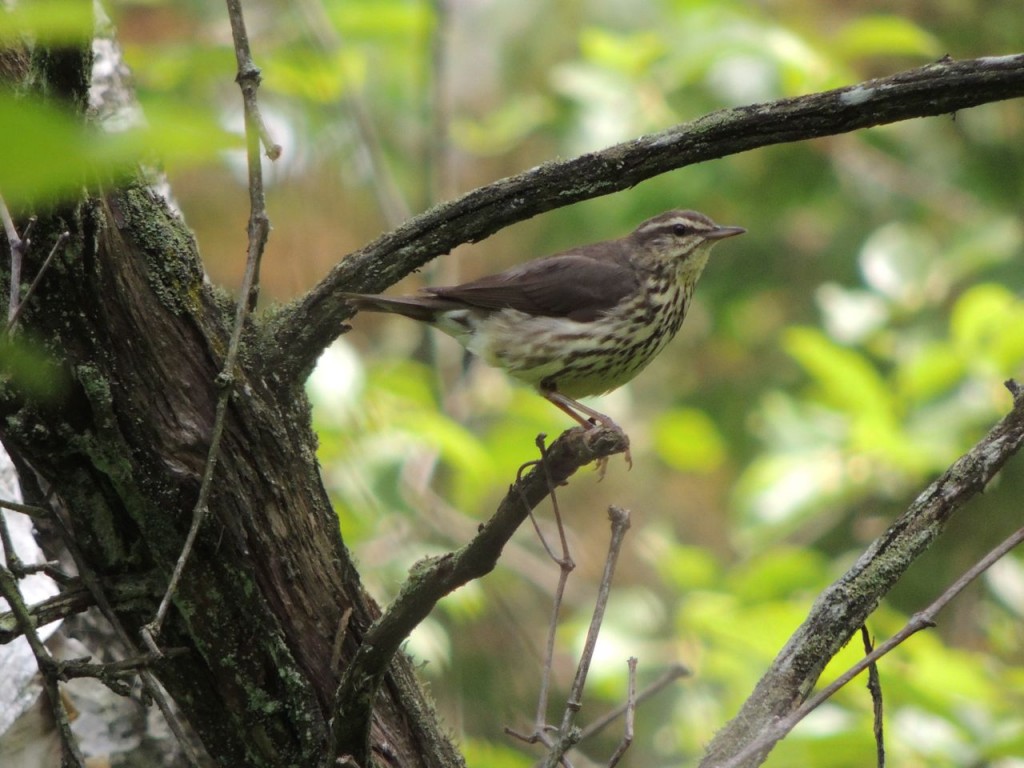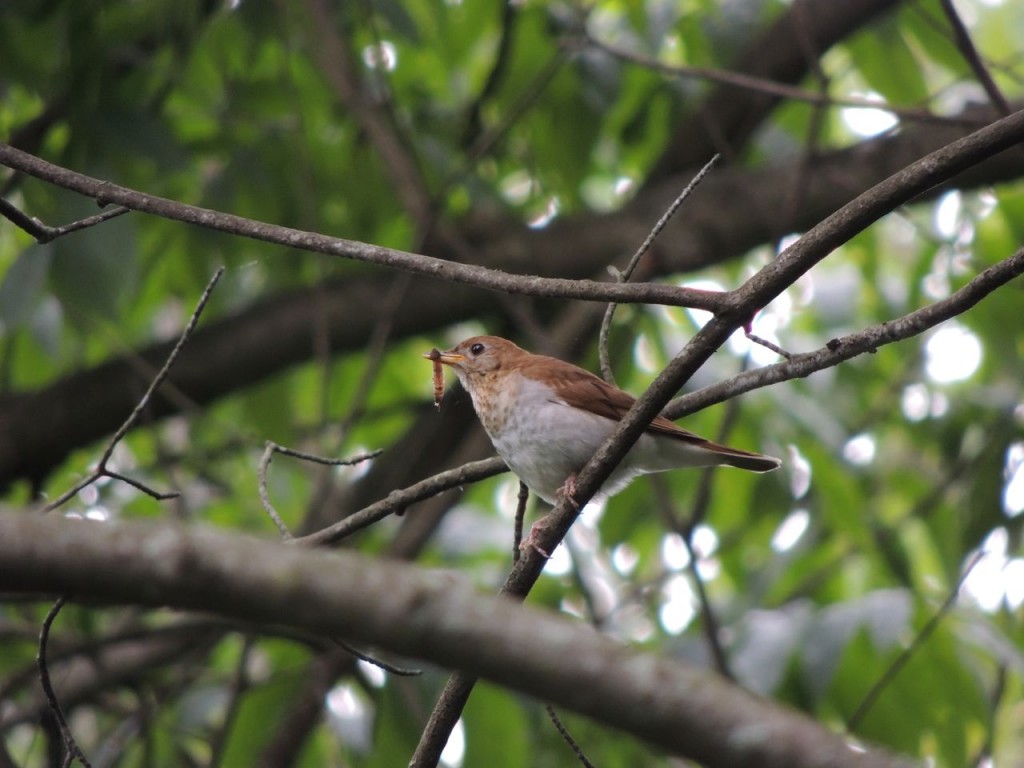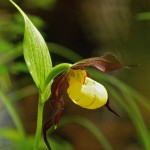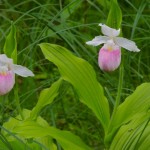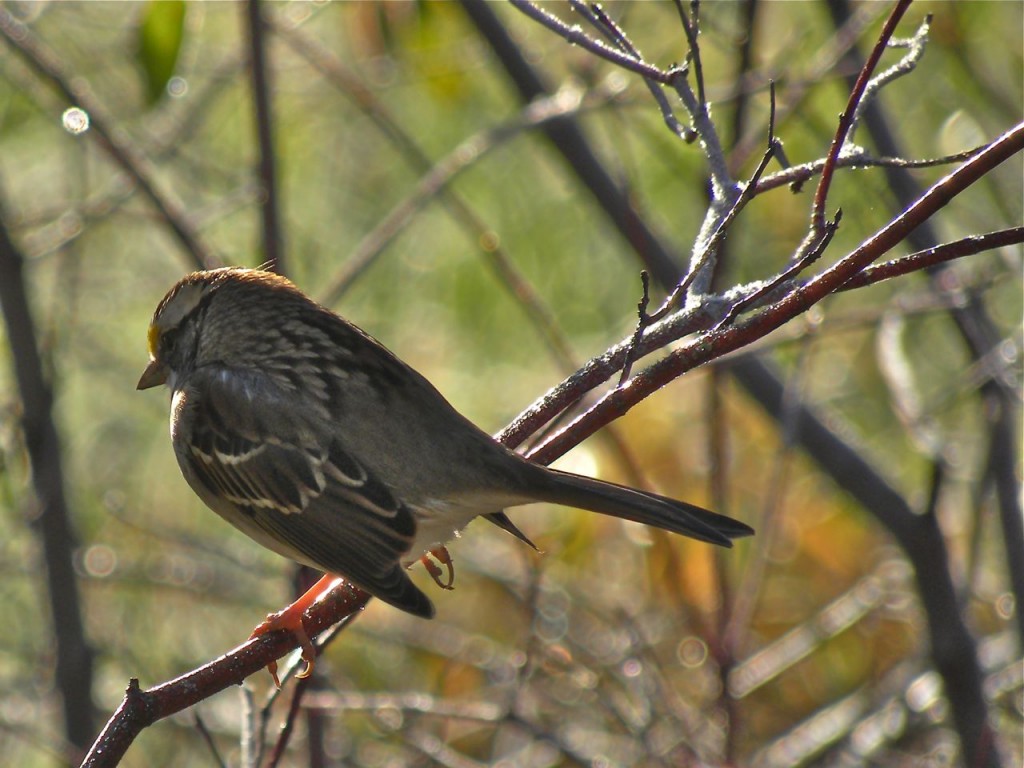10 July 2013. Cabot Head, ON. This was a violently windy day. A steady westerly picked up in the middle of night and blew two supposedly anchored sailboats onto the rocky shore, their anchors just not up to the task. There seemed to be no damage done but I’ll bet it made for an anxious few hours on board before daybreak. The wind kept birds down low, but there was still plenty to be seen. I struggled along the lake shoreline exploring while trying to keep away from the wind-driven spray.
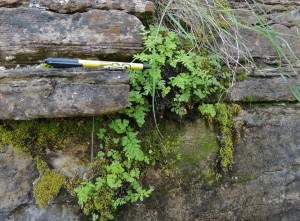
I came across a cleft in the cliff face that apparently never sees the sun because it held a colony of Slender Cliffbrake ferns, a notoriously hard-to-find species that thrives only in dampness and full shade.
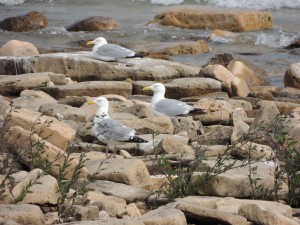
A picturesque group of Herring Gulls sat loafing on the stony shore but all other waterfowl had taken refuge far from the angry waves. A Black-billed Cuckoo made a brief fly-past appearance in front of the cottage’s porch. You could hardly call it slow though, there was always something interesting. A pair of American Redstarts that made no secret of the presence of their nest, they chipped loudly at me whenever I walked past and fluttered around from branch to branch often within a metre or so of my head.
By evening the wind had died down and I was able to get some interesting photos of a resident Gray Catbird. Most people (if they know it at all) recognize the catbird as a long tailed, slate grey bird with a black yarmulke. Its characteristic mewing call gives it its name, but it has a rich and liquid song that we often heard as the last traces of daylight gave up around 9.30. But, little known is that its undertail coverts are a rich brick red colour, you hardly ever see them; but this bird was close to its nest and anxious to make sure everyone knew who belonged where. Perhaps the setting sun enhanced the colour but the display is captured in my photos of the catbird, my Bird of the Day.
